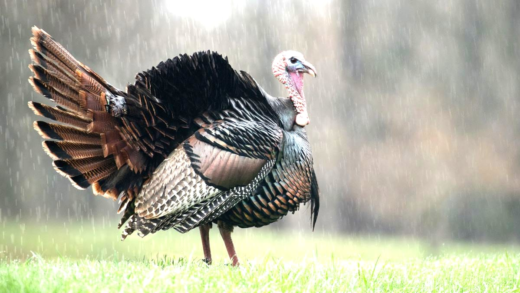Spider silk is a remarkable material with potential applications in medicine, textiles, and eco-friendly products. It surpasses steel in strength-to-weight ratio, is biodegradable, and features a unique protein structure that provides flexibility and durability. Fascinating facts about spider silk reveal its historical use and ongoing research challenges.
What is Spider Silk Made Of: Understanding Its Components
Spider silk is a remarkable material that showcases nature’s engineering prowess. Composed primarily of proteins, spider silk consists of long chains of amino acids. These proteins are arranged in a specific structure that contributes to the silk’s unique properties, such as strength and elasticity. The main components of spider silk include:
- Fibroin: The core structural protein that provides tensile strength.
- Sericin: A protective protein that surrounds fibroin, aiding in the silk’s overall integrity.
- Amino Acids: The building blocks that link together to form the silk proteins, with glycine, alanine, and serine being the most prevalent.
This combination of components allows spider silk to be incredibly lightweight yet remarkably durable, making it one of the strongest natural materials known to science.
Amino Acids in Action: How They Form Spider Silk
Amino acids play a crucial role in the formation of spider silk. When spiders produce silk, they synthesize proteins within specialized glands. These proteins are primarily made of amino acids, which link together in long chains through peptide bonds. The sequence of amino acids determines the properties of the resulting silk. For example:
- Glycine: Contributes to flexibility and strength.
- Alanine: Enhances the crystalline structure of the silk, increasing its durability.
- Serine: Provides hydrophilicity, allowing the silk to absorb moisture.
The arrangement of these amino acids creates a unique secondary structure, often in the form of beta-sheets, which further enhances the silk’s tensile strength and elasticity. This intricate process highlights how spiders utilize amino acids to create one of nature’s most fascinating materials.
Different Types of Spider Silk: A Closer Look
Spiders produce several types of silk, each serving different purposes in their lives. Understanding these types helps appreciate the versatility of spider silk. The main types include:
- Orb-weaving Silk: Used to create iconic circular webs for trapping prey.
- Dragline Silk: The strongest type, used for safety lines and to anchor webs.
- Silk for Egg Sacs: Protective silk that encases spider eggs.
- Capture Silk: Specialized silk that helps catch and hold onto prey.
- Web Silk: Used to construct the web structure itself, varying in thickness and strength.
Each type of silk has distinct properties tailored to its function, showcasing the spider’s adaptability and the evolutionary advantages provided by silk production.
The Unique Properties of Spider Silk: Why It’s So Special
Spider silk is renowned for its unique properties, making it one of the most fascinating materials in nature. Its strength and flexibility are unmatched by most synthetic materials. Here are some standout features:
- Tensile Strength: Spider silk is stronger than steel when compared weight for weight, making it an excellent material for various applications.
- Elasticity: It can stretch up to five times its length without breaking, which is crucial for its role in webs.
- Lightweight: Despite its strength, spider silk is incredibly lightweight, allowing spiders to create large webs without added weight.
- Biodegradability: Unlike synthetic alternatives, spider silk decomposes naturally, making it an eco-friendly option.
- Water Resistance: Certain types of spider silk can repel water, enhancing its functionality in various environments.
These properties not only highlight the engineering marvel of spider silk but also open up numerous possibilities for human use, from medical sutures to biodegradable fishing lines.
How Spiders Produce Silk: The Silk-Making Process
Spider silk production is a fascinating process that occurs within specialized glands in a spider’s body. The silk is produced in a liquid form and solidifies as it is extruded through spinnerets. Here’s a breakdown of the process:
- Silk Glands: Spiders have several types of silk glands, each producing different silk types tailored for specific functions.
- Protein Synthesis: Within these glands, proteins are synthesized from amino acids, forming the basis of the silk.
- Extrusion: As the spider pulls the silk through its spinnerets, the liquid silk hardens, creating solid strands.
- Spinning Techniques: Spiders can control the thickness and type of silk produced by adjusting the speed and pressure of extrusion.
This silk-making process showcases the complexity and efficiency of spider biology, allowing them to produce silk that serves various purposes throughout their lives.
The Role of Silk in a Spider’s Life: More Than Just Webs
Silk plays a crucial role in a spider’s survival and daily activities. It’s not just for building webs; its versatility is remarkable. Here are some key roles of silk:
- Prey Capture: Spiders use silk to create traps for catching prey, ensuring a steady food supply.
- Protection: Silk is used to wrap eggs, providing safety for future generations.
- Mobility: Some spiders use silk lines to travel, allowing them to move between locations safely.
- Defense: Silk can be used as a means of escape, creating a quick getaway when threatened.
These functions highlight the essential role silk plays in a spider’s life, impacting its ability to thrive in diverse environments.
Human Applications of Spider Silk: A Look at Its Potential
Spider silk has captivated scientists and researchers due to its remarkable properties, leading to various human applications. Its strength, elasticity, and biodegradability make it a prime candidate for innovative uses in medicine and industry. Here are some potential applications:
- Medical Sutures: Spider silk can be used for stitching wounds due to its biocompatibility and strength. It minimizes the risk of infections and promotes healing.
- Artificial Ligaments and Tendons: The flexibility and durability of spider silk make it suitable for creating artificial ligaments, providing better outcomes in surgeries.
- Textiles: Spider silk could revolutionize the fashion industry by producing lightweight, strong, and sustainable fabrics.
- Biodegradable Fishing Lines: Given its natural decomposition properties, spider silk can serve as an eco-friendly alternative to traditional fishing lines.
These applications highlight the potential of spider silk to contribute to sustainable practices and enhance medical technologies, showcasing its versatility beyond the natural world.
Spider Silk vs. Steel: What Makes It Stronger?
When comparing spider silk and steel, it’s essential to consider their strength-to-weight ratios. Spider silk, while much lighter than steel, exhibits incredible tensile strength, often outperforming steel when weight is taken into account. Here’s how they compare:
- Strength-to-Weight Ratio: Spider silk is stronger than steel by weight, making it incredibly effective for various applications.
- Elasticity: Unlike steel, which is rigid, spider silk can stretch significantly without breaking, allowing it to absorb impacts better.
- Biodegradability: Steel is not biodegradable, whereas spider silk decomposes naturally, providing an eco-friendly alternative.
This comparison demonstrates why spider silk is often regarded as a superior material in specific contexts, particularly where weight and flexibility are crucial.
Structure of Spider Silk: How It Contributes to Strength
The unique structure of spider silk is vital to its strength and flexibility. Composed of proteins arranged in a specific manner, the silk’s properties derive from its molecular architecture:
- Beta-Sheets: The silk proteins often form beta-sheet structures, which enhance tensile strength.
- Hydrogen Bonds: These bonds between protein chains provide stability and resilience, allowing the silk to withstand tension.
- Amorphous Regions: While some parts are highly ordered, others are more flexible, contributing to the silk’s overall elasticity.
This intricate structure not only explains the exceptional properties of spider silk but also inspires biomimetic designs in engineering and materials science.
Interesting Facts About Spider Silk: Surprising Insights
Spider silk is full of fascinating characteristics that continue to intrigue scientists and enthusiasts alike. Here are some surprising facts:
- Variety: Spiders can produce several types of silk, each tailored for specific functions, from web-building to capturing prey.
- Historical Use: Ancient civilizations used spider silk for fishing lines and even in the production of textiles.
- Research Potential: Scientists are studying spider silk for its applications in tissue engineering and regenerative medicine.
- Production Challenges: Despite its benefits, mass-producing spider silk synthetically remains a challenge due to the complexity of its proteins.
These facts not only highlight the uniqueness of spider silk but also its potential to inspire future innovations across various fields.





Comments are closed.